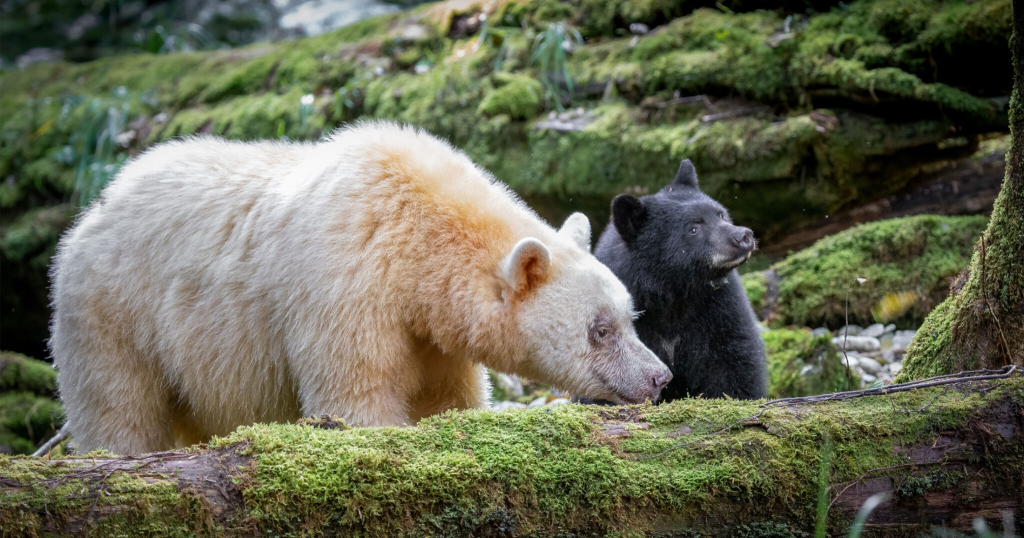Black Canada Lynx Caught On Camera For The First Time And People Can’t Believe It

A significant discovery unfolded when a researcher from the University of Alberta in Canada captured a photograph of a black-coated Canada lynx. Thomas Jung, also affiliated with the Government of Yukon, managed to record a 30-second video of this extraordinary animal using his cell phone.
The findings of this unique encounter have been documented. These recordings were placed in an article titled “Paint it black: first record of melanism in Canada lynx (Lynx canadensis),” published in the journal Mammalia. On August 29, 2020, in a rural residential area near the town of Whitehorse, Yukon, the lynx was spotted.

This locale comprises low-density housing intertwined with mature forests primarily populated by white spruce trees. Observers were able to witness the lynx's presence from a distance of approximately 160 feet. The lynx appeared relatively calm and unperturbed by the nearby presence of people and a dog, until it eventually departed, possibly in response to the dog's barking.
The footage of the Black Canada Lynx has undergone thorough scrutiny by multiple field experts, who have confirmed its identification as a lynx.
Despite the low-resolution images, certain distinct characteristics were discernible. Thomas Jung noted, "It had a black coat with whitish-gray guard hairs scattered throughout, as well as whitish-gray hairs in the facial ruff, rostrum, and dorsal regions." While the image quality prevented a detailed examination, these subtle features were still detectable and analyzed to establish the viability of the Lynx's identification.
Video Credit: ScienceAlert / YouTube
The Canada Lynx has evolved to fit in perfectly in its surroundings, going almost unnoticed by prey
The coat color within the Lynx genus is known for its consistency, exhibiting minimal differences within species compared to other members of the cat family (Felidae). For the Canada lynx, the typical coat color follows a similar pattern, transitioning from silvery grayish coats in winter to reddish brown in summer.
It's worth mentioning that the summer coat may also display dark spots and the presence of black hairs on the tips of their tails and ears, adding to their distinctive appearance. This unique coat color is a hallmark of the Canada lynx species.
The discovery of melanism in Lynx canadensis, as observed in this recorded sighting, holds significance not only due to its novelty but also because it signifies a rare instance of coat color variation within the Lynx genus. This observation could potentially trigger further investigation into the Black Canada Lynx.
What does coat color have to do with it all and why does it sometimes pose as a disadvantage?
While coat color variations are relatively limited within the Lynx genus, other mammals exhibit broader spectrums of color. An example is the cream-colored variation of the black bear, known as the "Spirit Bear," found along the coast of British Columbia.

These color changes often confer advantages such as temperature regulation or effective camouflage. For instance, black bears in the Yukon region are frequently tan or cinnamon-colored, enabling them to blend seamlessly with the sparse forests in the area. The suitability of color depends on what aligns best with the specific habitat, as highlighted by Jung.
Melanism: A genetic factor that plays a big role
The phenomenon known as "melanism" results from a genetic mutation that leads to the excessive production of melanin, a dark-colored pigment. This surplus melanin causes individuals to display a dark coat color. In the case of large cats found in humid tropical regions, melanism can potentially enhance their concealment within the lush jungle environment.
Jung's review of literature revealed instances of black ground squirrels observed in burned areas of boreal forests, as well as similar occurrences with bobcats in New Brunswick. These instances suggest that melanism allows individuals to blend in with charred timber, offering a form of camouflage.
Regarding melanism in lynx species, researchers are still exploring whether it confers adaptive or maladaptive traits. Jung postulates that the loss of camouflage exhibited by the black Canada Lynx when hunting in snowy environments is likely maladaptive. He speculates that the darker coat color may put the animal at a considerable disadvantage while hunting hares during the winter season.
Sources
- “Black Canada lynx photographed for the first time.” Phys Org. De Gruyter. October 28, 2022
- “The story behind the black lynx that went viral.” Cottage Life. Conor Mihell. October 31, 2022
DISCLAIMER: THIS WEBSITE DOES NOT PROVIDE MEDICAL ADVICE The information, including but not limited to, text, graphics, images and other material contained on this website are for informational purposes only. The purpose of this website is to promote broad consumer understanding and knowledge of various health topics. It is not intended to be a substitute for professional medical advice, diagnosis or treatment. Always seek the advice of your physician or other qualified health care provider with any questions you may have regarding a medical condition or treatment and before undertaking a new health care regimen, and never disregard professional medical advice or delay in seeking it because of something you have read on this website.
